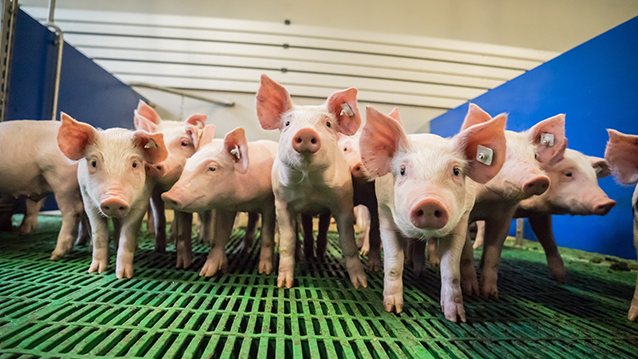
The imbalance between lactation capacity and
Sow prolificacy
In the last 15 years, sow’s prolificacy has increased by 4.5 piglets per litter (Culbertson, 2019). To support this trend, colostrum average yield has increased with the born piglets’ number. When comparing a small litter of 10 piglets with a large litter of 20 piglets, the colostrum quantity is seen to increase from 5kg to 6.5 kg per sow (Krogh, 2017).
However, this increase of colostrum production does not match the hyper-prolificacy increase. That is why, beyond 13 piglets per litter, individual colostrum intake is finally decreasing (Krogh, 2017). This leads to a highly critical period as the piglets’ early livability is fully dependent on the colostrum nutrient absorption. Higher heterogeneity and piglets mortality over 15% are some of the consequences coming from an imbalance between lactation capacity and prolificacy.
The importance of colostrum for
Young piglets
Because piglets are naturally born devoid of gamma globulins, colostrum provides them immunological protection (Rooke and Bland, 2002). Young piglets’ immunity relies on the transfer of the IgG, provided by the colostrum during the first 24 hours. Then IgG are no longer assimilated, and immunity is built up at the intestinal level by the IgA and IgM obtained during all the lactation. IgA and IgM are not assimilated by the epithelium cells as they constitute the local gut immunity in the piglet’s mucus.
Moreover, the IgG start to be produced by the piglets 7 days after birth while IgA and IgM need 10 days before being produced (Rooke and Bland, 2005). This is why piglets cannot reach the weaning without a sufficient intake of colostrum.
Because colostrum production starts from one day before farrowing and is done mainly after the first-born piglet (Feyera, 2019), its quality can be easily improved by enriching the lactation feed. Brix index, IgG levels and antioxidant defenses are key indicators to evaluate the beneficial effect of the colostrum on piglet’s livability. These nutrients are a give of the sow metabolism to the piglets and their concentrations are corelated with the sow antioxidant cover.





